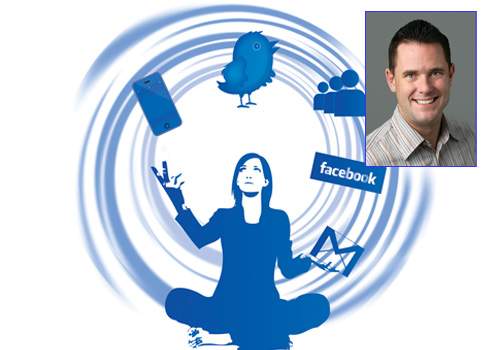When Todd Pierce, chief information officer at Genentech, the giant biotechnology firm, took over the IT department in 2002, employees had rated it the least satisfying place to work in the company. “I tried all the usual big-company things,” Pierce says, “the traditional training programs and big meetings where you bring everyone together offsite and try to address their questions and inspire them. But it just wasn’t working.” He had experience with mindfulness and found it helpful, but the idea that mindfulness could transform the culture of a large organization was radical. In 2006, he decided to call in Pam Weiss, a seasoned executive coach with more than twenty years’ experience as a meditation practitioner and teacher.
When Pierce challenged Weiss to come up with a mindfulness-based development program that could be available at all levels of the organization and potentially transform the culture, Weiss replied that she knew of no existing model. Pierce realized they had to create one. They started by introducing mindfulness classes, but the real goal was to develop a program that used mindfulness—but without calling it that.
The initial mindfulness classes were well received, and they are still offered regularly, but Pierce wanted something that would have more impact, something where people wouldn’t have to sign up for mindfulness per se. What they decided to offer was a ten-month “personal excellence program.”
“For the first one,” Weiss says, “I invited fifty people to a voluntary program, but I soon learned that no one ever feels that an invite from the CIO is voluntary. Next time around we made it by application, but we didn’t tell people that everyone would be accepted. We really wanted to see whether people would want to take part. I was sure that no one would bother to fill out the application—120 people applied for sixty spots.”
The personal excellence program (PEP) is now in its fifth year. In 2011, there are 115 new participants and one hundred graduates taking part, as well as twenty graduates who have been further trained to support the graduate groups. Six hundred and fifty people have taken part over the life of the program. “In the first year, I lived in fear that I would be discovered for doing this and taken away in chains. So I just told corporate people that we were doing an experiment and gathering data, which we were, and are,” Pierce says. “Now my department is No. 2 in the company in employee satisfaction, and in 2009 Computer World rated our IT department No. 2 in their listing of best places to work.”
Weiss explains that the program begins by asking each person to pick a skill (for example, listening, giving feedback, delegation, work–life balance) and a quality (decisiveness, calm, courage, receptivity) they would like to develop. “It’s important,” she says, “that we start with people’s genuine motivation, from their heart. We want them to tap into their intrinsic motivation, rather than what the company or their boss wants them to work on.”
Pierce adds that the approach is deliberately counterintuitive. “In normal organizational life,” he says, “we define the problem and go get the solution as fast as we can. I want this program to force people to slow down and discover what’s deeply meaningful to them—not just at work but in their entire life. I’ve had to tell bosses to stop performance coaching people and give them the space to find out what is really happening with themselves.”
The core of the program—and what makes it mindfulness-based—is a three-center check-in practice. The basic practice, Weiss says, is to pause and turn your attention inward to notice:
In my head center: what am I thinking?
In my heart center: what am I feeling?
In my body center: what am I sensing?
“We meet once a month,” she says, “and after people have been chit-chatting for a while, we do the three-center check-in. Right away, the quality of the conversation changes. You can just hear it go vroop, dropping into something more authentic.” The check-in is also a practice that participants use throughout the month to observe and “gather first-person data” on, for example, what they were thinking, feeling, and sensing when they were listening well, less well, or very poorly. Having discussed their aspirations with the group, they report back on their observations.
As a result, Weiss says, people have intimate insights about themselves that they can use, with the help of others in the group, to develop new behavior. “This is a living, breathing kind of mindfulness, one that’s cultivated in dynamic, interactive, real-life contexts.”
Interested in more? Read @Mindful Workplaces, The Digital World Connects and Mindfulness and Innovation.
Also see Mindful.org’s news coverage of the upcoming 2012 Wisdom 2.0 conference, which will take place on February 23-26: Wisdom 2.0 plans underway.






